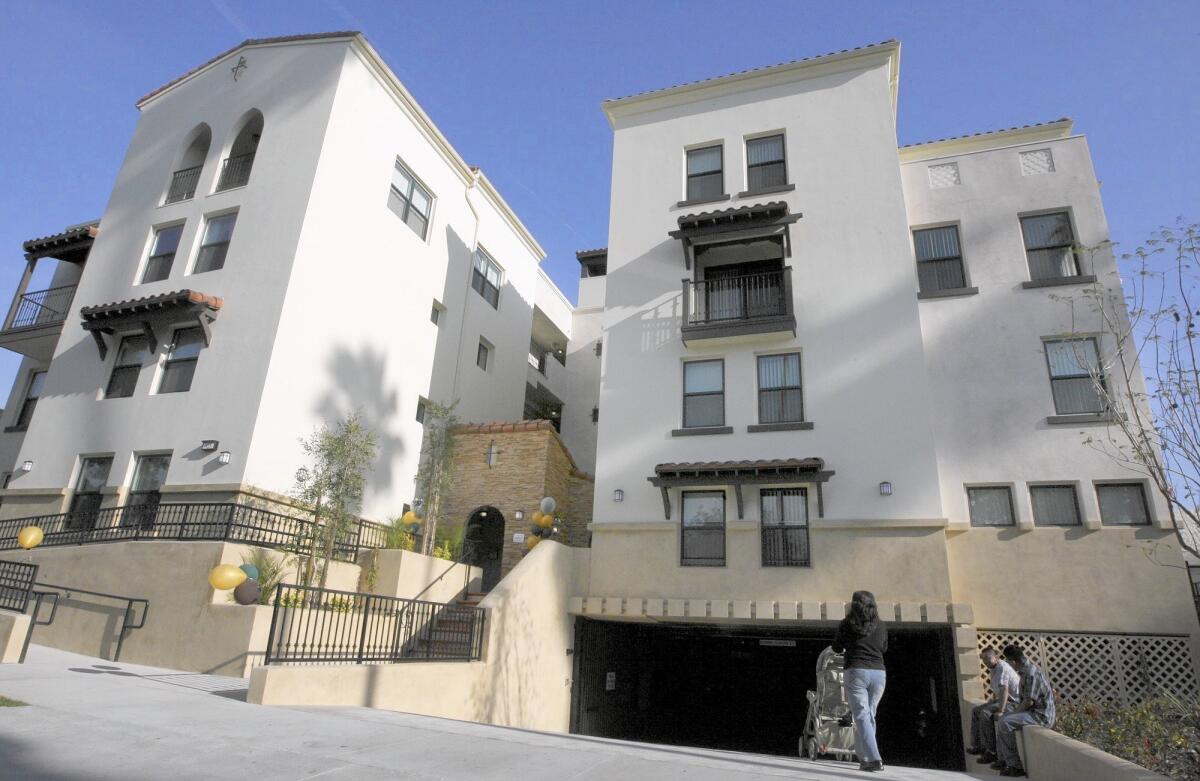Learning Matters: 2 landlords share their perspectives about affordable housing

- Share via
After I suggested that more owners of rental properties consider the benefits of partnering with the city’s low-income housing programs (“Brainstorming needed in affordable-housing shortages,” Glendale News-Press, July 20-21), I decided to speak with some landlords to better understand the pros and cons of my suggestion.
As I wrote in an email to Pam Sorem, a civically active local Realtor, “It’s easy for me to suggest folks offer a unit or two for low income housing, but I need some insights.”
So far, I’ve spent time with two local rental owners, and although I haven’t come up with the answer to our region’s housing needs, I did come away with a deeper appreciation for two people — and other “mom-and-pop” landlords like them — who have been working to meet those needs for years.
Very soon after seeing my email, Pam Sorem steered me to Anthony Santillo, a lifelong Glendale resident and local title agent she considers “our go-to person for information regarding renting in California and specifically in the area.”
Santillo was equally quick to reply to my email. Meeting me the next morning for coffee, he seemed happy to stretch the 20 to 30 minutes I’d requested into a 75-minute affordable-housing tutorial.
For a second perspective, I contacted another Realtor friend (and former teacher), now in her 80s, to hear more about her longtime tenants. I also wanted to know more about the gourmet meals she regularly delivers to homeless individuals living along the edges of Glendale.
Though she wished to remain anonymous, my friend agreed to let me accompany her on an afternoon of meal deliveries and then met me for breakfast the next morning to talk about her experience as a landlady.
As it happens, both she and Santillo have their rental properties not in Glendale but in adjoining L.A. neighborhoods, including Atwater, Elysian Valley, also known as Frogtown, Eagle Rock and Tujunga. They’re not participating in the recently established incentives that can make affordable-housing programs like Section 8 more attractive business propositions. Current incentives can include a month’s rent to hold a vacant unit during the inspection period, dedicated staff people to assist with concerns, reliable rent payments and reimbursement for costs beyond normal wear and tear — as when a tenant trashes a unit.
These two have been managing their rentals since long before such incentives became available, some units for as long as three decades.
My friend bought her first rental in the 1980s when a real estate colleague suggested she buy an apartment building that had fallen out of escrow.
Santillo started in property management in his youth, helping his Italian immigrant parents with rental properties they purchased to supplement their Glendale small-business income.
During summer vacations, while some of his Glendale High friends traveled with their families, he and his siblings learned the basics of home repair and watched his parents interact with tenants.
Now, alongside his career as a title agent, he continues to manage the properties much as his parents did, involving his children as his dad involved him.
For both these landlords, owning and managing rentals isn’t their primary source of income, nor is it a speculative investment. It’s part of their way of life. They take care of their properties and build relationships.
“It’s very difficult to make a living” owning and managing rentals, Santillo said. But it hasn’t stopped him.
When my friend bought her first apartment building, she set the rent for the vacant units to match what existing tenants were paying. Since then, with that and other properties, she’s raised her rents very gradually.
Most of her tenants now pay only $800 to $900 a month, well below the $1,800 a neighbor charges for units of the same size.
“I can do that because I bought them so long ago, my mortgages are paid off,” she said.
The neighbor, by contrast, paid $800,000 for his fourplex and carries a $600,000 mortgage.
My friend also helps her tenants in other ways, like going out to purchase a washer and dryer when she encountered a tenant washing clothes in the bathtub.
She recalled with considerable fondness the single mother with two young children who pleaded for approval as a tenant, despite a past bankruptcy.
Now, years later, landlady and tenant look back at the children’s straight-A progress through school and successful graduation from college.
“My tenants will be with me until they die,” she said.
Santillo expressed a similar sentiment when he spoke about a tenant who has been with him for 18 years.
“I hate to lose a tenant,” he said.
But it hasn’t always been easy dealing with rent-controlled L.A. properties or with the overlapping inspections and requirements he’s experienced— all without the benefit of the incentives now available to landlords.
Surely not every property owner who favorably considers the incentives to accept low-income tenants will have my friend’s inclination to help people in need.
Few may share Santillo’s evident delight in making housing available at affordable prices. But perhaps a few owners will think a little harder because of these two.
I’ll say more about the meal-delivery ride-along in a future column.
Joylene Wagner is a past member of the Glendale Unified school board, from 2005 to 2013, and currently serves on the boards of Glendale Educational Foundation and other nonprofit organizations. Email her at jkate4400@aol.com.
